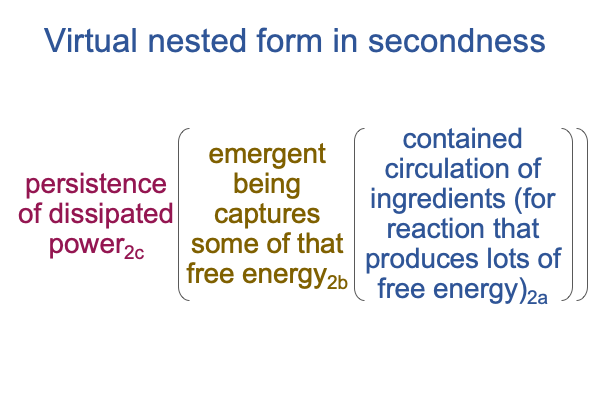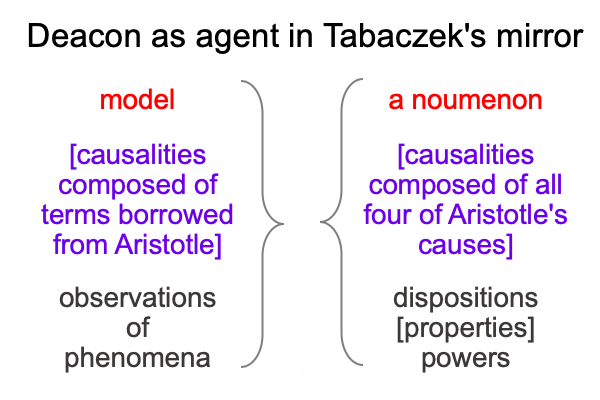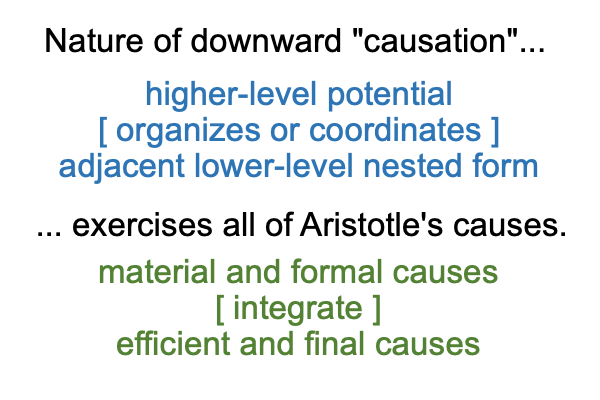0131 The emergent phenomena2b, the electric current2b, has “a life” of its own, in the sense that it represents the capture of some of the free energy of an orthograde process. It is a “non-self” self, within the “self” of the entire interscope, the fuel-cell driven motor for sale by corporation A. The motor dissipates the energy represented by the current and translates it into movement. So, the power2c of the emergent being2b that virtually situates (and emerges from) the fuel cell2a is dissipated as mechanical movement2c. The dissipated power2c persists as movement2c.
0132 Here is a picture of the virtual nested form for all three levels in the realm of actuality.

0133 Now, I can look at the emergent phenomenon2b, as a thing in itself, an actuality that needs to be understood in material terms. Here, Aristotle’s hylomorphe is a good place to start: matter [substantiates] form.
On one hand, the electrical current2b is directly contextualized in the normal context of a fuel cell3b arising from the potential of a contragrade arrangement of hydrogen and oxygen gases1b. On the other hand, the emergent phenomenon2bis part of a grander scheme (or virtual normal context2c) that formalizes the phenomenon2b and orders its material2b(anode, wire, motor, wire, cathode) and efficient (design of fuel cell) causations2a.
The above nested form portrays the “on the other hand”.
0134 This virtual nested form is such a discovery that Deacon deserves a commendation that philosophers talking about “emergence” and “downward causation” may not deserve.
Deacon presents his discovery entirely within the science side of Tabaczek’s mirror.
Here is a picture.

0135 The “dullard” Tabaczek notices the subtle change and that gives him inspiration. Deacon clearly (and significantly) alters Aristotelian notions so that formal causes fall under the label of “material” and final causes sort into the title of “efficient”.
Or something like that.
Nevertheless, when looking into the mirror of natural philosophy, Deacon sees the ghost of the positivist intellect conjuring a smoky image of a noumenon [cannot be objectified as] its phenomena.
0136 How so?
Well, Deacon (sort of) regards the constraints and biases imposed on the orthograde reaction1b and the simplifications demanded from the emergent phenomenon1c as “causes”.
Tabaczek wrestles with this apparent misapplication of the term, “causes”. Deacon’s “causes” do not seem, at first blush, to correspond to Aristotle’s four causes.
However, if I have learned anything from this examination, it is the following.

0137 First, in emergence, “downward causation” follows the nature of a passage from a lower-level category-based nested form to a higher-level and the subsequent ordering of the lower-level in response to the new situation or new perspective.
Second, in emergence, both the category-based nested forms that compose each horizontal level and the vertical virtual category-based nested forms that compose each vertical column in Tabaczek’s interscope exercise all of Aristotle’s causesin a holistic manner.
